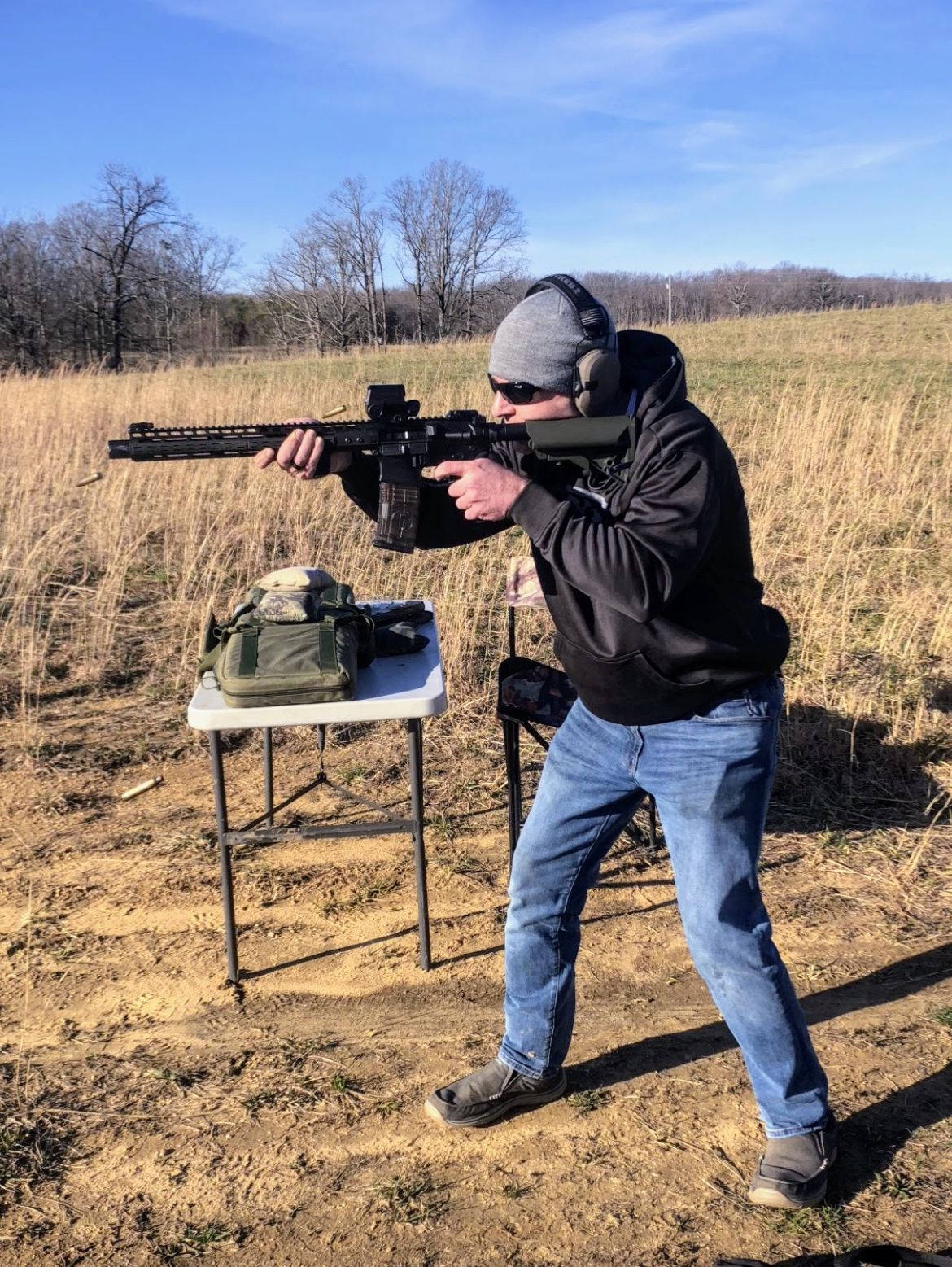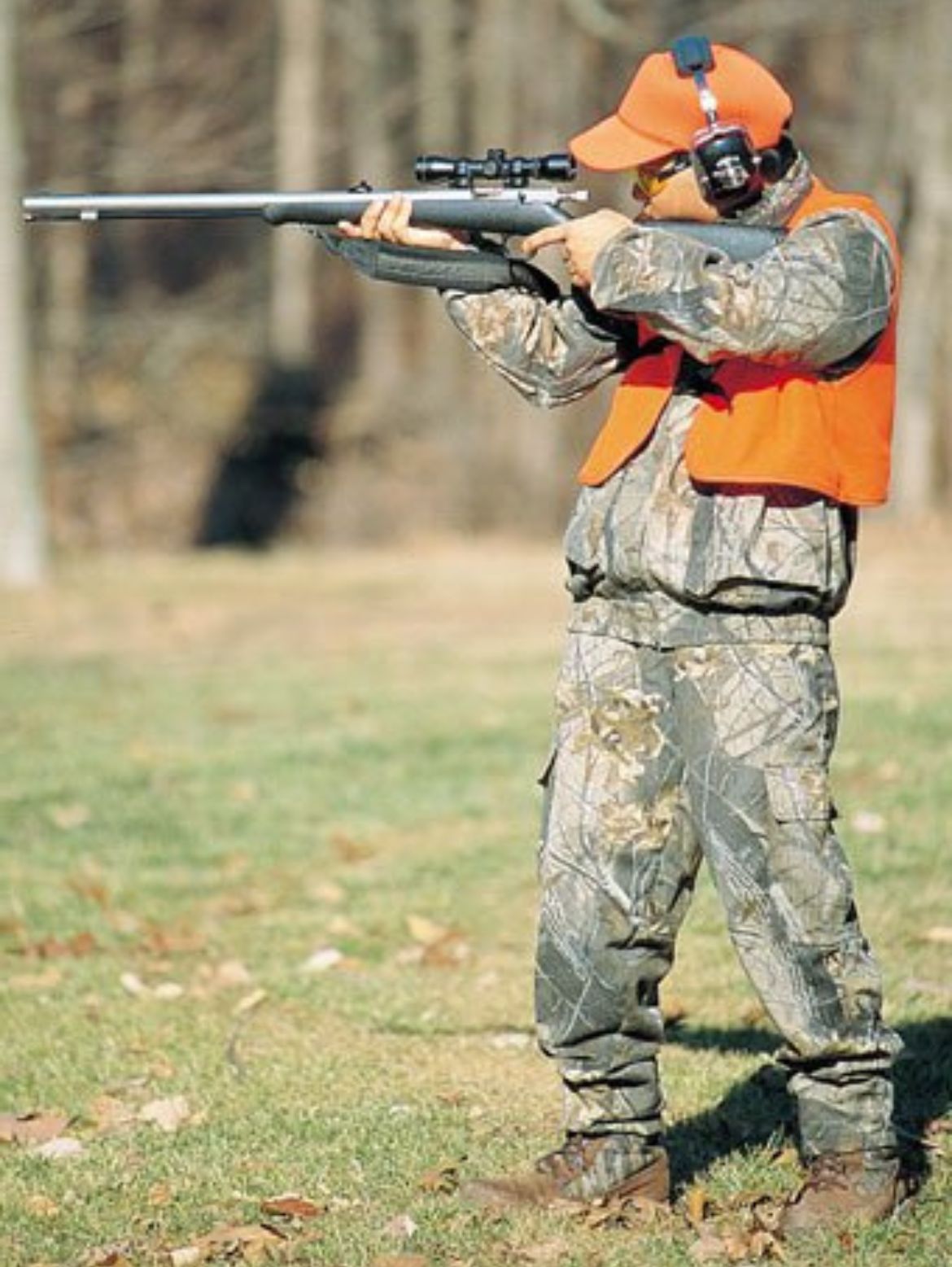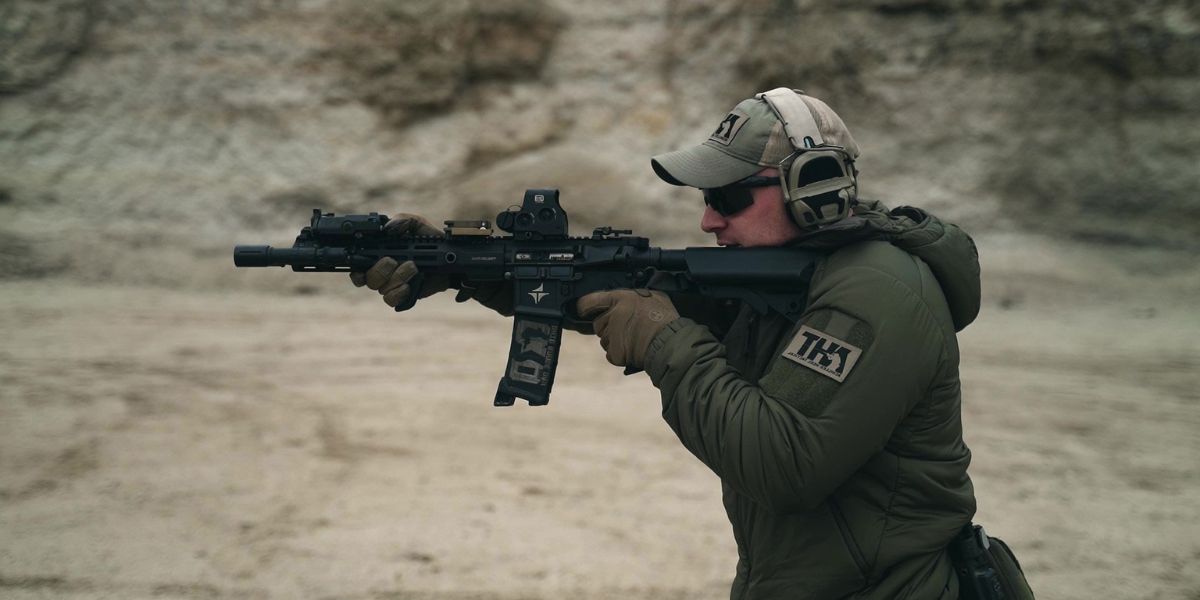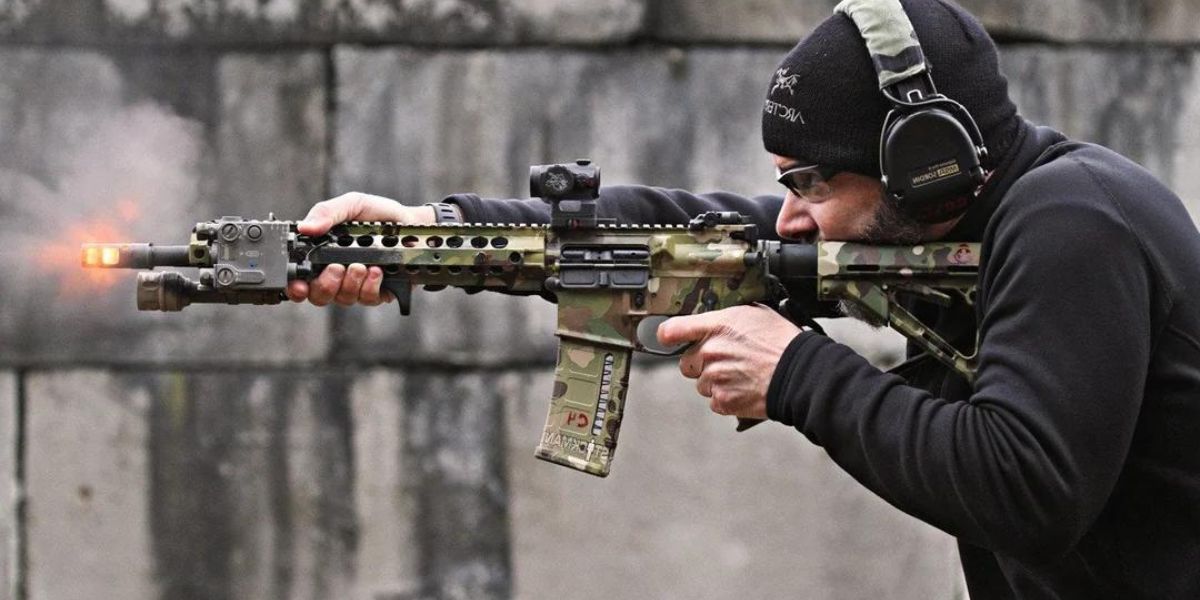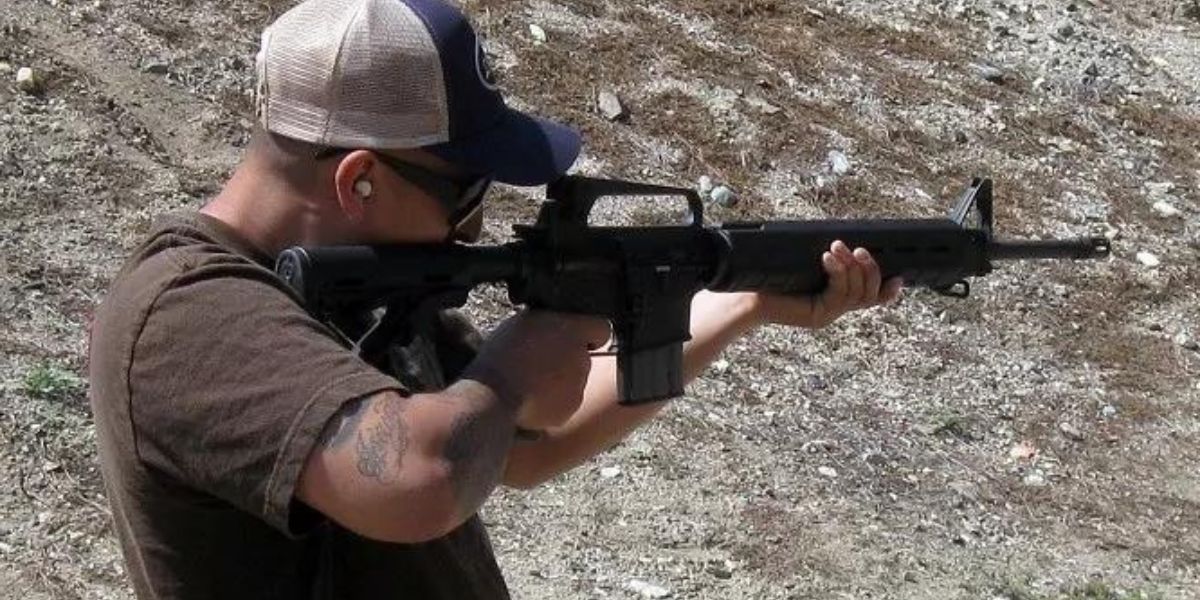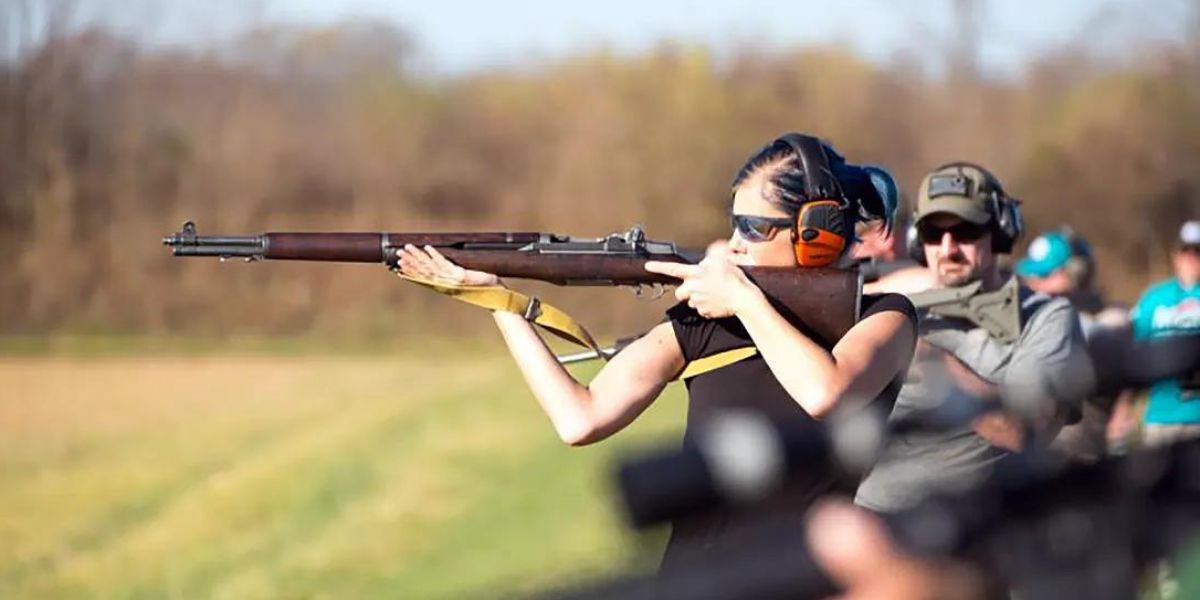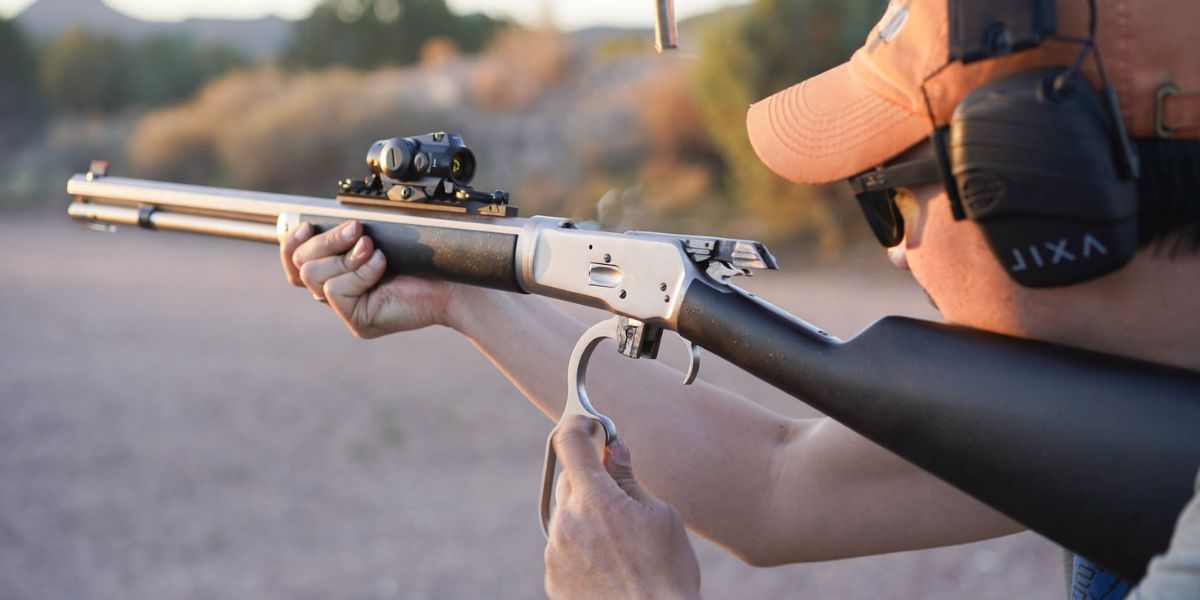In order to shoot a carbine or a rifle accurately and efficiently, you need to know how to stand and hold the weapon properly. You have to learn to reduce the impact of recoil and of the environment where you are operating. For this, stance and posture are important.
Stance
Stand with your feet shoulder-width apart. Never stand relaxed or with your feet together. Your shoulders and hips should be facing the target.
Posture
Your lower body must be ready for loaded posture, meaning, your lower body must be ready to take the pressure from shooting. You have to be balanced and from hips down. Stand straight without leaning back, and keep your shoulder blades aligned with your heels. While shooting, you lean forward from your hips, keeping your chest up. Your elbows must be pulled in tight against your body.
Grip
Apart from stance and posture, it is important to have a grip on the weapon you are operating. The four contact points of a carbine rifle that you need to focus on are:
- Grip below the trigger. For this, you need to use your dominant hand.
- At the front of the rifle, under the rail, there is a vertical grip. For this, you have to use the non-dominant hand.
- Stock weld is the part of the rifle that rests against your shoulder.
- Cheek weld is the part where your dominant side cheek rests against the stock.
To understand or to find the correct position where you can place the stock weld, place your dominant hand on the rare grip and nondominant hand on the forward grip. Lift the rifle straight up, close to your eye, in such a way that the sight aligns with your eye perfectly. Be careful, keep your head straight and don’t tilt it to the side or adjust the rifle to see the sight better, as it will make it difficult to aim accurately.
Based on the height of your sight, position your cheek on the stock. Your goal must be to make firm and consistent contact with the cheek weld as soon as you raise the weapon.
Dominant Hand Grip- Fire Control
Your dominant hand controls the trigger and safety. You can control the safety switches with this hand. Make sure that your trigger finger is the only part of your hand that is actively pulling the trigger. When you hold the rifle with your dominant hand, don’t push the rifle hard against your body. Grip it firmly, so that it stays in place.
Non-Dominant Hand Grip
Your non-dominant hand plays an important role in controlling the rifle grip. When you fire, the rifle recoils and the nose of the gun rises, which disturbs the sight focus or your aim and your next shot might get affected. To overcome this is important, and non-dominant side grip plays an important role in this.
Avoid These Mistakes
Make sure that you don’t make these mistakes while trying to control the front end of the gun. Firstly, do not cradle the weapon by resting the bottom of the front grip in your palm. Secondly, avoid holding the front end by the grip fixture alone.
How To Maintain Correct Grip, Maintain Stability And Focus On Target?
To control the front end of the rifle, wrap your thumb over the bore and the other four fingers below it. The vertical grip should press against the back of your hand. To maintain stability of the rifle, keep your elbows close to your body. For using a sling, place it over your non-dominant hand’s bone. This creates tension and helps to hold the rifle steady, reduce recoil, and keep your sight on target.
Put Yourself To Test
Test your setup by getting into your shooting position and aiming at the target. Before you pull the trigger, look down at your feet. Now, shoot for three rounds while keeping your eyes on your foot. This helps you feel the recoil.
Now that you have felt the recoil impulse, fire five more shots by looking straight down. Observe your posture and stance. If it’s incorrect, your toes lift off the ground each time you shoot. If this happens, it means your lower body (feet, calves, and thighs) is not properly supporting you.
If your posture and grip are correct, your stance won’t change when you fire the rifle. To improve stability, practice this drill and pay attention to how your body feels rather than just your aim.

